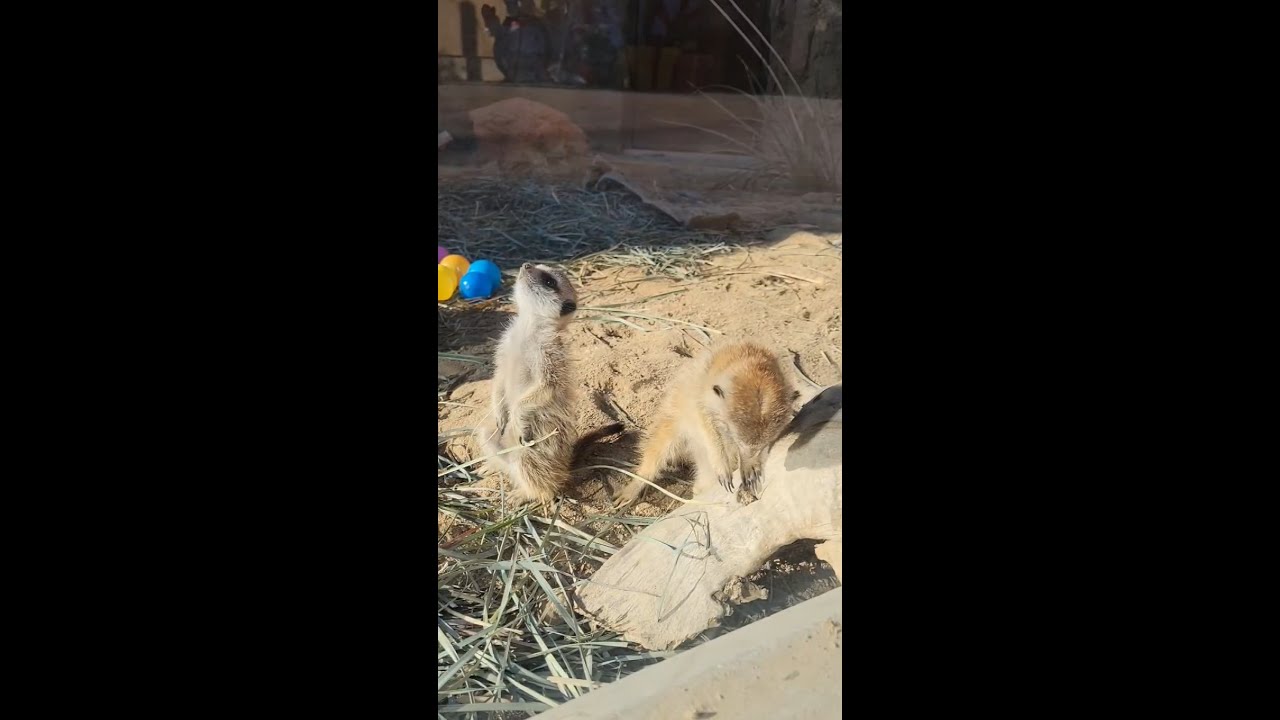- An introduction to Kiazi and Djambi, the meerkats featured in the video.
- A deep dive into the ecological role and social behavior of meerkats in the wild.
- The specific challenges and responsibilities involved in managing meerkats within a zoo setting.
- The conservation efforts essential for the preservation of meerkat habitats and populations.
- The educational value of using platforms like short videos to raise awareness for wildlife conservation.
Kiazi and Djambi are two fascinating meerkats who are the stars of the content in question. Meerkats are members of the mongoose family and are native to the arid regions of southern Africa. Known for their upright stance and highly social behavior, meerkats live in groups known as mobs or clans. Kiazi and Djambi are part of such a social structure, which is characterized by a division of labor and cooperative breeding. In a typical mob, individuals take turns performing different roles, such as sentinel duty, foraging, and babysitting. This cooperation is vital for their survival, particularly in environments full of predators like hawks and snakes.
The ecological role of meerkats is significant. As insectivores, they help control the populations of pests such as beetles, spiders, and centipedes. This pest control service is critical in maintaining the balance of their ecosystem. Moreover, meerkats are prey for larger predators, making them an integral part of the food web. Their role extends beyond just pest control; their burrowing activities aerate the soil, promoting plant growth and enhancing the landscape.
Zoo management of meerkats like Kiazi and Djambi requires a unique approach. Meerkats are highly social and intelligent animals, meaning they need enriched environments to thrive in captivity. This enrichment includes providing varied and stimulating activities that mimic their natural behaviors, such as foraging and digging. These activities not only keep the meerkats physically active but also mentally stimulated. Meeting their social needs is also crucial; meerkats should generally be housed with other meerkats to reflect their natural social structures.
A significant aspect of managing meerkats in zoos is overseeing their breeding and social dynamics. Given their cooperative breeding system, group composition and hierarchy must be carefully monitored. Disruption in hierarchy can lead to aggression or stress, which can affect the physical health of the animals. Furthermore, maintaining genetic diversity within captive-bred populations is vital to prevent inbreeding and ensure healthy populations.
Conservation efforts for meerkats and their habitats are essential for the broader goal of wildlife conservation. Although not currently endangered, meerkats face pressures from habitat destruction, climate change, and human encroachment. Conservation programs aimed at preserving meerkat habitats involve safeguarding the dry, open savannahs and scrublands they inhabit. This can include initiatives like restoring native vegetation and mitigating the impacts of agriculture.
One innovative way to engage the public in meerkat conservation, along with that of other wildlife, is through digital platforms and social media. Videos like "Meet the Meerkats: Kiazi & Djambi #shorts" serve as an effective tool for raising awareness and educating the public about the importance of wildlife conservation. These short form videos are designed to capture attention quickly, conveying important messages in an engaging manner. They reach a broad audience, including those who might not visit a zoo or engage with traditional educational materials.
By focusing on individual animals like Kiazi and Djambi, these videos can personalize the message of conservation, making it relatable and impactful. They have the potential to inspire viewers to learn more about wildlife and conservation, possibly even motivating them to support conservation efforts financially or through volunteering.
Overall, meerkats like Kiazi and Djambi are not just charming animals; they serve as ambassadors for their species and their ecosystems. Educating the public about their ecological role, the complexities of managing them in captivity, and the importance of conserving their natural habitats is essential to ensure the future of these captivating creatures. Meerkats, through their naturally engaging behaviors and social dynamics, offer a window into the intricacies of ecological relationships and the importance of biodiversity, making them ideal subjects for educational content and conservation advocacy.
*****
Source Description
Time for a formal introduction! Our meerkat pups have officially been named. Meet Kiazi and Djambi. This adorable duo has been enjoying scurrying about in their habitat with the rest of the mob. They’re growing up fast! Be sure to come see them during your next visit to the Zoo.


